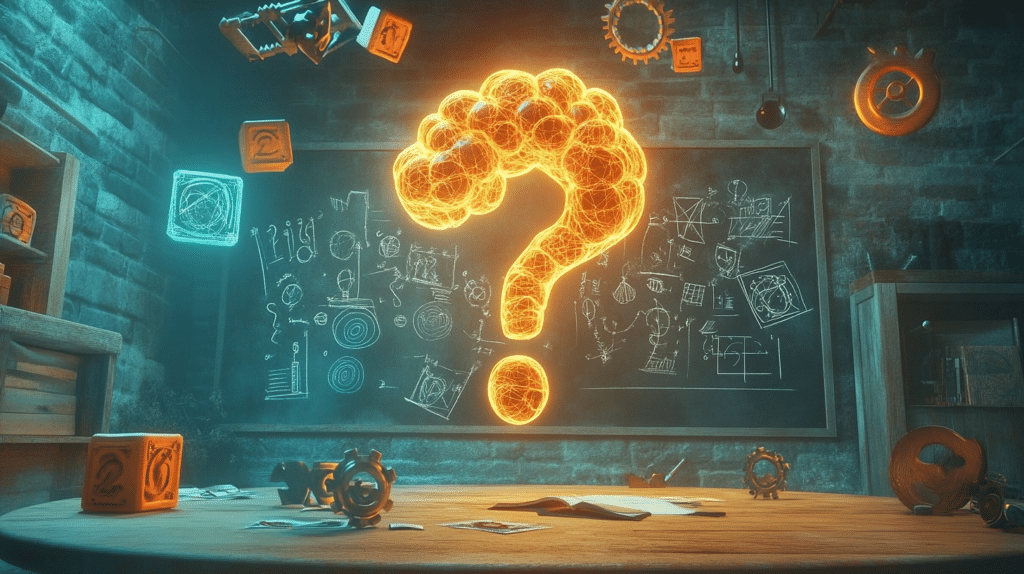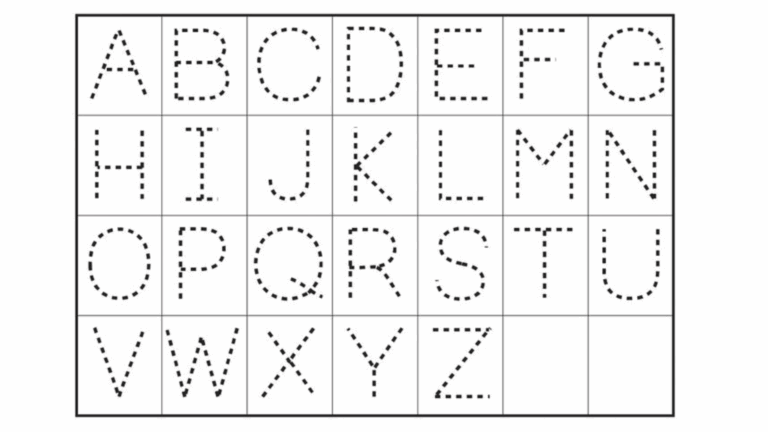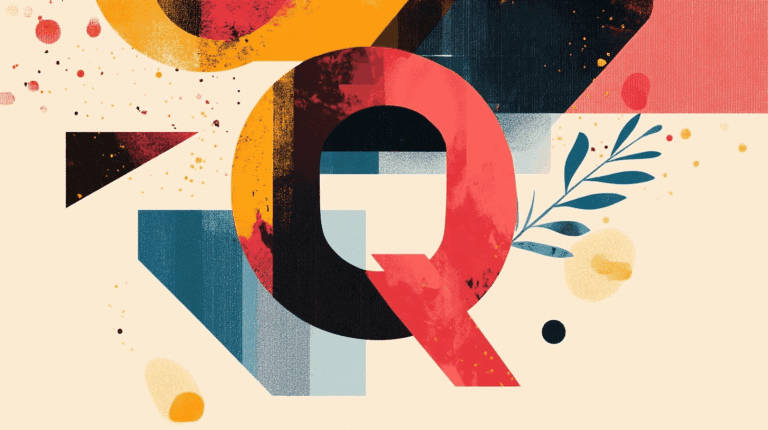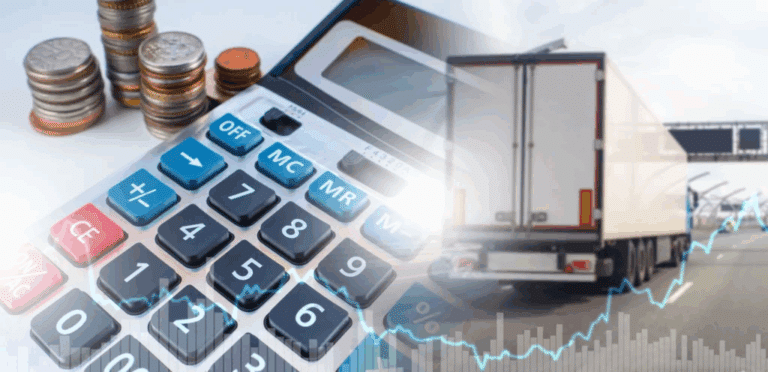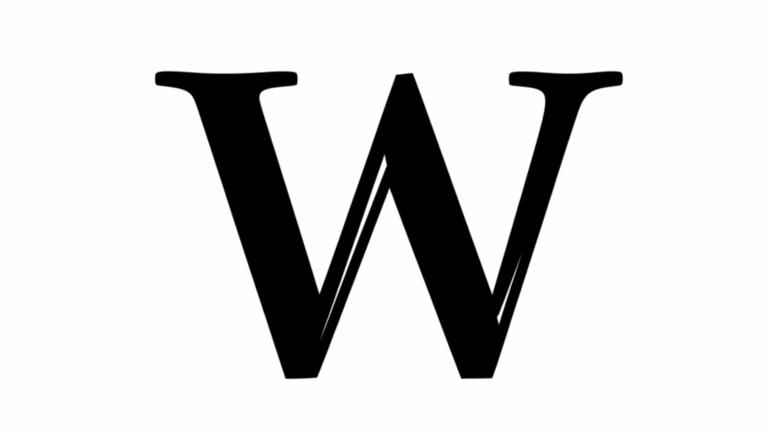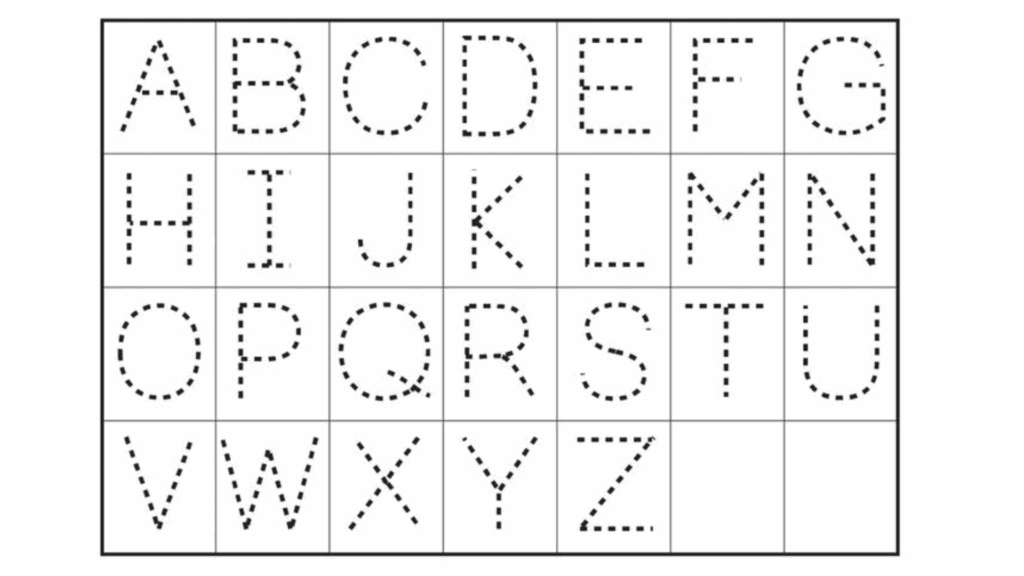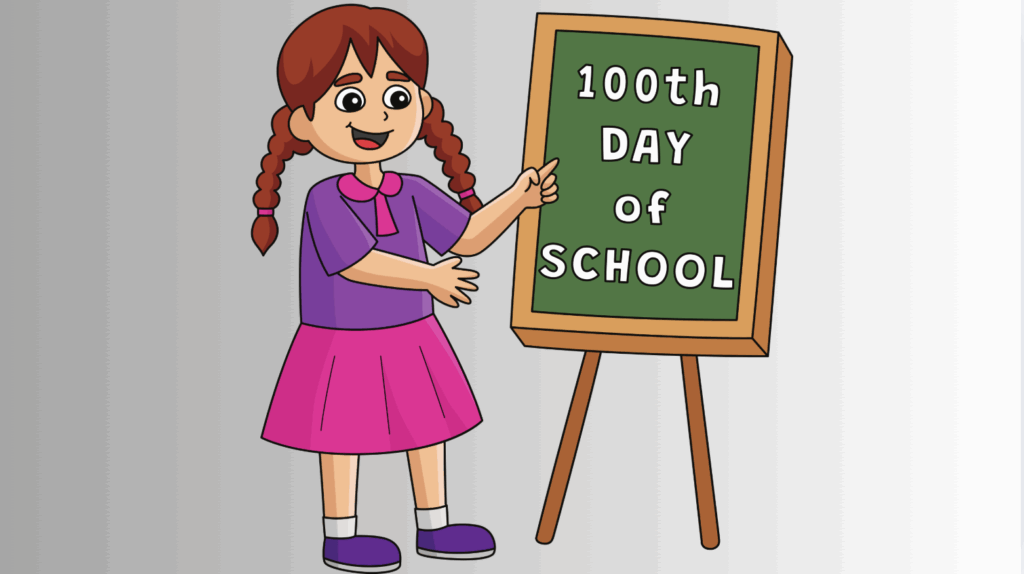Math riddles make most people stop in their tracks.
Their brains buzz with activity as they attempt to solve what seems simple at first glance. But there’s more to these number puzzles than meets the eye.
Math fans often hunt for fresh challenges to test their skills, but finding quality brain teasers can be tough. Many websites offer basic problems that don’t push mental limits or create that satisfying “aha” moment.
This collection of 321 math trivia riddles changes that. Each puzzle was chosen to trick, test, and tease the brain in new ways.
From beginners who enjoy casual math fun to experts looking for worthy challenges, these riddles offer something for everyone.
Ready to put your math skills to the test? Keep reading to find your perfect brain teaser.
History of Math Trivia You Should Know
Math has been around for thousands of years, shaping the way we understand the world. But did you know some of its history is full of surprising trivia? Let’s take a fun experience through time!
The oldest known mathematical artifact is the Lebombo bone, dating back 35,000 years! It’s a baboon fibula with tally marks, possibly used for counting.
Meanwhile, the ancient Egyptians were already solving equations 4,000 years ago, using basic algebra to build pyramids.
The number zero, which seems so basic today, wasn’t widely used until Indian mathematicians introduced it around the 5th century.
And did you know Pythagoras, famous for his theorem, believed numbers had mystical properties? His followers even avoided eating beans because they thought they contained human souls!
Fast forward to the 1600s—Isaac Newton and Gottfried Leibniz independently invented calculus at the same time. Talk about a mathematical coincidence!
Math has always been full of surprises, and its history proves numbers are more than just calculations—they’re stories waiting to be uncovered!
Extraordinary Math Records and Achievements

-
What is the largest known prime number determined so far?
The largest known prime has over 24 million digits. -
Who holds the world record for reciting the most digits of pi?
Rajveer Meena recited 70,000 digits of pi in 2015. -
What is the fastest time to solve a Rubik’s Cube using a robot?
0.38 seconds, set by the AI-powered robot “Sub1 Reloaded.” -
Who solved the most difficult Sudoku puzzle in the fastest time?
Thomas Snyder solved an “impossible” Sudoku in 1 minute 23 seconds. -
What is the largest magic square ever constructed?
A 10,000 x 10,000 magic square with 100 million numbers. -
What is the record for the most simultaneous Sudoku solvers?
Over 5,000 participants solved puzzles together in 2012. -
What’s the fastest time someone solved a 100-digit multiplication problem mentally?
Shakuntala Devi did it in just 28 seconds. -
Which number holds the record for the most appearances in pi?
The digit 1 appears most frequently in the first million digits of pi. -
Who holds the world record for the fastest time to count to 1 million?
Jeremy Harper counted to 1 million in 89 days. -
What’s the largest known Mersenne prime number?
It has over 24 million digits and was determined in 2018. -
Who holds the record for the fastest square root calculation?
Alexis Lemaire computed a 200-digit square root in 70.2 seconds. -
How long did it take to compute the first 100 trillion digits of pi?
It took 157 days using a supercomputer in 2022. -
Who holds the record for the fastest mental cube root calculation?
Marc Jornet Sanz solved a 3-digit cube root in 0.625 seconds. -
What’s the largest number ever factored by a quantum computer?
A 48-bit number, factored using a quantum algorithm. -
What’s the highest number of Rubik’s Cubes solved while juggling?
13 cubes, solved by Que Jianyu in 2018. -
Who memorized the most decimal places of pi?
Suresh Kumar Sharma memorized 70,030 digits in 2015. -
What is the fastest time to compute a billion digits of pi?
About 3.5 hours using modern computing power. -
What’s the largest prime number used in encryption?
A 617-digit prime is used in RSA encryption. -
Who holds the record for fastest multiplication of two 13-digit numbers?
Gaurav Sharma did it in under 10 seconds. -
What’s the fastest time to solve a 17×17 Sudoku puzzle?
It took over 44 minutes for the best solver. -
What’s the fastest time to arrange numbers 1 to 100 in order?
14.2 seconds by a mental math expert. -
Who determined the largest known twin prime?
It was found in 2016 and has over 388,000 digits. -
What’s the record for the longest prime number ever proven?
A 24-million-digit prime was confirmed in 2018. -
What’s the most complex math problem ever solved?
The proof of the Kepler Conjecture required over 3 terabytes of data. -
What’s the largest number ever written down by hand?
A Googolplex, which is a 1 followed by a googol of zeroes. -
Who holds the record for the fastest mental addition of 100 numbers?
Priyanshi Somani added them in 17 seconds. -
What’s the largest number of digits manually computed in pi?
Over 100,000 digits, calculated before computers. -
What’s the world’s longest mathematical proof?
A proof of the Boolean Pythagorean Triples problem took 200 terabytes. -
What’s the fastest time to factor a 100-digit number?
Under 3 seconds using advanced algorithms. -
Who holds the record for the fastest time solving a 4×4 Rubik’s Cube?
Feliks Zemdegs solved it in 21.54 seconds. -
What’s the largest set of perfect numbers ever found?
51 known perfect numbers exist, with the largest having over 49 million digits. -
Who determined the largest known even perfect number?
It was found using the Great Internet Mersenne Prime Search (GIMPS). -
What’s the record for the largest mathematical constant computed?
Pi was calculated to over 100 trillion digits. -
What’s the longest math contest ever held?
A 48-hour continuous math competition in China. -
Who holds the record for the fastest 15-digit division?
Neelakantha Bhanu Prakash did it in under 10 seconds. -
What’s the record for the longest continuous math lecture?
Over 24 hours on calculus. -
What’s the record for the highest number counted aloud?
1 million, taking nearly three months. -
What’s the largest multiplication ever computed mentally?
A 20-digit multiplication problem solved mentally. -
What’s the fastest mental calculation of a fourth root?
Done in under 1 second. -
What’s the largest palindromic prime number determined?
A 300,000-digit palindrome prime was found. -
What’s the record for the longest Fibonacci sequence manually calculated?
Over 10,000 terms. -
What’s the fastest time to solve a mathematical maze?
Under 30 seconds in a speed competition. -
Who holds the record for the fastest time computing a sine function?
Calculated in under 2 seconds. -
What’s the largest known amicable number pair?
They each have over 1 million digits. -
What’s the fastest time to solve a 6×6 magic square?
Under 5 minutes. -
What’s the highest number of decimal places used in an experiment?
Pi was used to 50 trillion digits. -
What’s the most expensive math book ever sold?
A Newton manuscript sold for over $3 million. -
What’s the longest continuous math problem-solving session?
Over 72 hours without a break. -
What’s the fastest time solving a 10-digit subtraction problem?
Done in under 1 second. -
What’s the largest prime number used in a cryptographic key?
A 2048-bit prime is commonly used. -
What’s the fastest mental computation of a log function?
Done in under 3 seconds. -
Who determined the fastest method to multiply large numbers?
Karatsuba’s algorithm is one of the fastest. -
What’s the longest proof ever verified by a supercomputer?
Over 1,000 pages long. -
What’s the largest number ever visualized by humans?
A Googolplex is impossible to write but can be conceptualized. -
What’s the most digits memorized in a day?
Over 30,000 digits of pi. -
What’s the record for the largest math class ever held?
Over 5,000 students attended. -
What’s the highest-level math problem solved by a child?
A 10-year-old solved college-level calculus problems. -
What’s the fastest human speedrun of a math exam?
A perfect SAT math score in 10 minutes. -
What’s the largest math equation ever written?
A proof that took over 10 blackboards. -
Who holds the record for the fastest time to solve a logic puzzle?
Under 20 seconds for a complex grid puzzle. -
What’s the largest dataset ever used in a math experiment?
Over 1 petabyte of data analyzed. -
What’s the longest-lasting math mystery?
The Riemann Hypothesis remains unsolved for over 160 years. -
Who solved the hardest integral in the fastest time?
A university professor did it in under 5 minutes. -
What’s the record for the longest polynomial equation solved?
Over 1,000 terms in a single equation. -
What’s the fastest time solving a 9×9 KenKen puzzle?
Under 2 minutes by a speed solver.
Everyday Life Math Trivia Facts
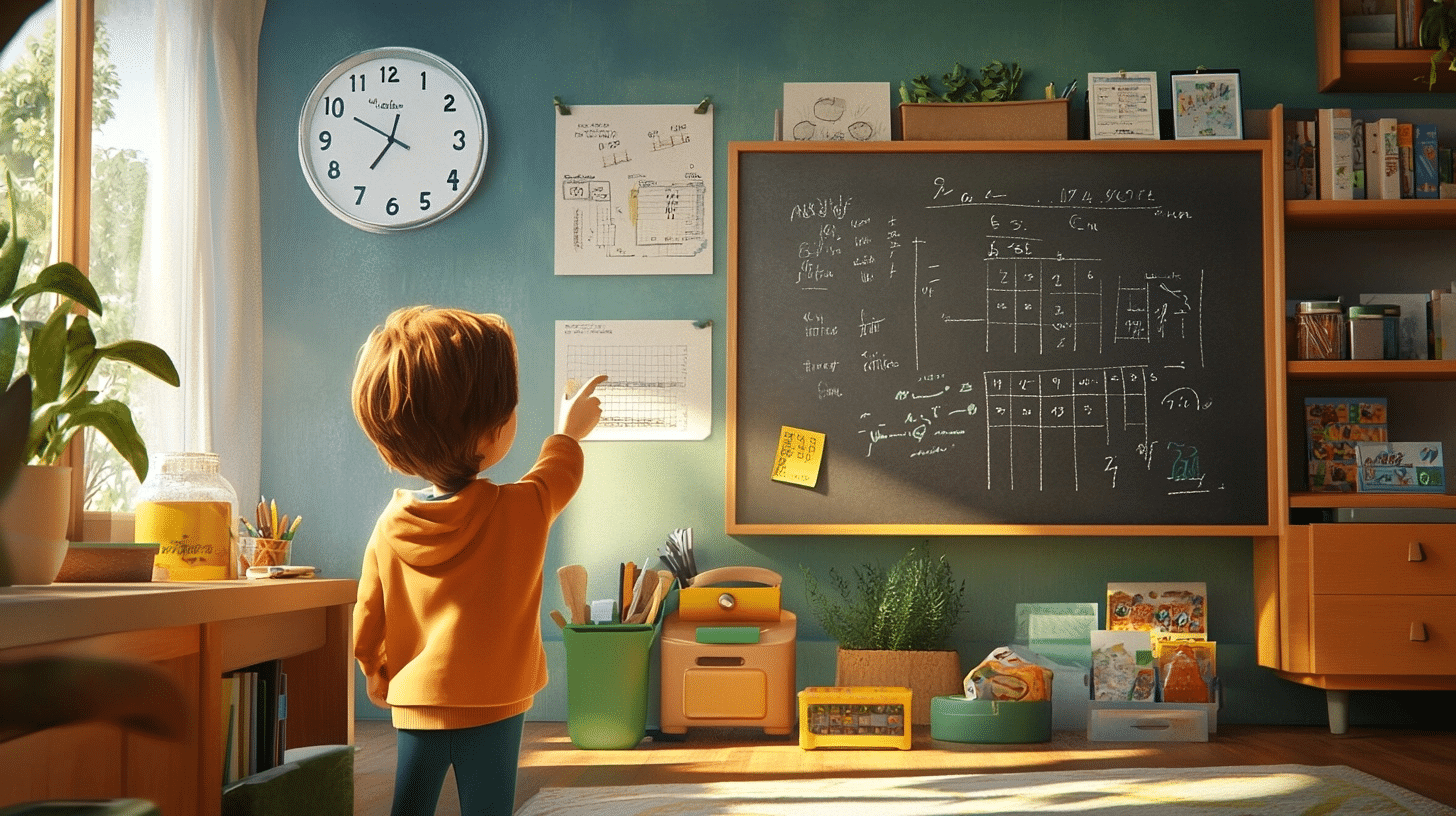
-
What is the sum of the angles in a triangle?
The sum of the angles in any triangle is always 180 degrees. -
If you buy 3 items for $5 each, how much do you pay in total?
You pay $15 in total (3 × $5 = $15). -
What is the perimeter of a rectangle with length 8 units and width 3 units?
The perimeter is 22 units (2 × 8 + 2 × 3 = 22). -
How many sides does a hexagon have?
A hexagon has 6 sides. -
What is the area of a square with a side length of 4 units?
The area is 16 square units (4 × 4 = 16). -
If a recipe calls for 2 cups of flour, and you want to double it, how many cups do you need?
You will need 4 cups of flour. -
What is the next number in the sequence: 2, 4, 6, 8, __?
The next number is 10. -
How many minutes are in 2 hours?
There are 120 minutes in 2 hours (2 × 60 = 120). -
If you have 10 apples and give away 4, how many apples do you have left?
You have 6 apples left. -
What is the value of 7 multiplied by 9?
The value is 63 (7 × 9 = 63). -
How many grams are in 1 kilogram?
There are 1,000 grams in 1 kilogram. -
What is the difference between 100 and 37?
The difference is 63 (100 – 37 = 63). -
If you divide 18 by 3, what is the result?
The result is 6 (18 ÷ 3 = 6). -
What is 25% of 200?
25% of 200 is 50 (200 × 0.25 = 50). -
What is the sum of 45 and 55?
The sum is 100 (45 + 55 = 100). -
How many hours are in a day?
There are 24 hours in a day. -
What is the area of a circle with a radius of 7 units?
The area is approximately 153.94 square units (π × 7² ≈ 153.94). -
What is the product of 8 and 12?
The product is 96 (8 × 12 = 96). -
How many months are in a year?
There are 12 months in a year. -
What is 5 raised to the power of 2?
5 raised to the power of 2 is 25 (5² = 25). -
What is the perimeter of a square with side lengths of 5 units?
The perimeter is 20 units (4 × 5 = 20). -
How many seconds are in a minute?
There are 60 seconds in a minute. -
If you subtract 15 from 100, what do you get?
You get 85 (100 – 15 = 85). -
What is the average of the numbers 10, 20, and 30?
The average is 20 ((10 + 20 + 30) ÷ 3 = 20). -
If a book costs $12 and you buy 3 books, what is the total cost?
The total cost is $36 (12 × 3 = 36). -
What is 10% of 500?
10% of 500 is 50 (500 × 0.10 = 50). -
How many feet are in a yard?
There are 3 feet in a yard. -
If you divide 40 by 5, what is the quotient?
The quotient is 8 (40 ÷ 5 = 8). -
What is the difference between 100 and 67?
The difference is 33 (100 – 67 = 33). -
If you buy 2 shirts for $15 each, how much do you pay in total?
You pay $30 in total (2 × $15 = $30). -
What is the product of 6 and 7?
The product is 42 (6 × 7 = 42). -
How many edges does a cube have?
A cube has 12 edges. -
What is the area of a rectangle with a length of 10 units and a width of 5 units?
The area is 50 square units (10 × 5 = 50). -
What is the value of 3 squared?
The value of 3 squared is 9 (3² = 9). -
What is the perimeter of a triangle with sides of 5, 6, and 7 units?
The perimeter is 18 units (5 + 6 + 7 = 18). -
How many degrees are in a right angle?
There are 90 degrees in a right angle. -
What is the total of 6, 12, and 18?
The total is 36 (6 + 12 + 18 = 36). -
If you have $50 and spend $23, how much do you have left?
You have $27 left (50 – 23 = 27). -
What is the square root of 64?
The square root of 64 is 8. -
How much is 30% of 150?
30% of 150 is 45 (150 × 0.30 = 45). -
What is the sum of 25 and 35?
The sum is 60 (25 + 35 = 60). -
How many minutes are in 3 hours?
There are 180 minutes in 3 hours (3 × 60 = 180). -
What is the product of 5 and 11?
The product is 55 (5 × 11 = 55). -
How many milliliters are in a liter?
There are 1,000 milliliters in a liter. -
If you have 10 pencils and give away 4, how many do you have left?
You have 6 pencils left. -
What is the area of a triangle with a base of 8 units and a height of 5 units?
The area is 20 square units (½ × 8 × 5 = 20). -
How many degrees are in a full circle?
There are 360 degrees in a full circle. -
What is the value of 15 minus 8?
The value is 7 (15 – 8 = 7). -
What is the square of 9?
The square of 9 is 81 (9² = 81). -
If a pizza is cut into 8 slices and you eat 3 slices, how many slices are left?
There are 5 slices left (8 – 3 = 5). -
What is the sum of the numbers 4, 9, and 14?
The sum is 27 (4 + 9 + 14 = 27). -
How many days are in a leap year?
There are 366 days in a leap year. -
What is 50% of 200?
50% of 200 is 100 (200 × 0.50 = 100). -
How many sides does a pentagon have?
A pentagon has 5 sides. -
What is the product of 4 and 8?
The product is 32 (4 × 8 = 32).
Unsolved Math Mysteries and Curiosities
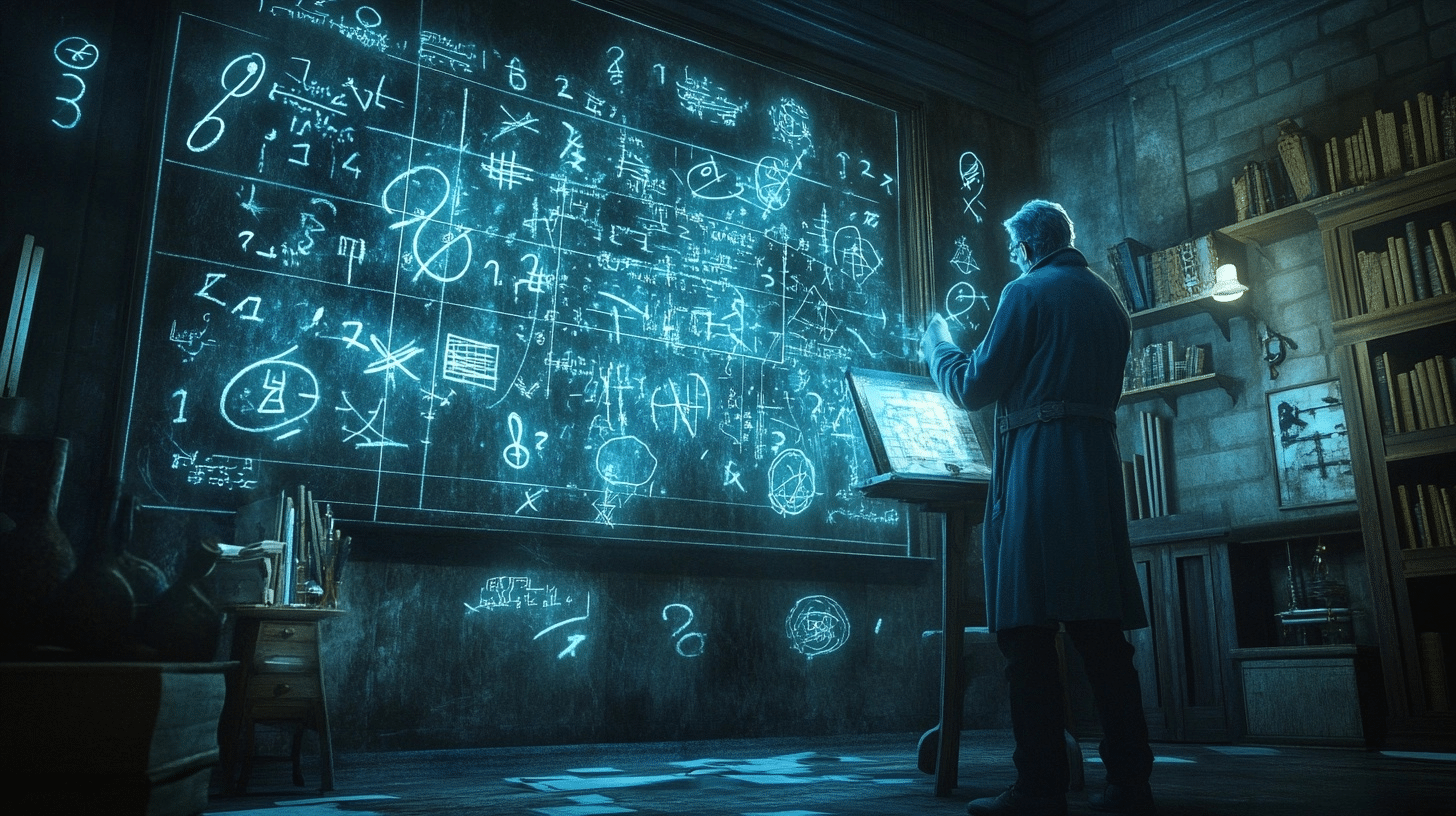
-
What is the Riemann Hypothesis?
It suggests that all non-trivial zeros of the Riemann zeta function lie on the critical line. -
What is the Collatz Conjecture?
It posits that any positive integer will eventually reach 1 through a specific iterative process. -
What is the Birch and Swinnerton-Dyer Conjecture?
It predicts a relationship between the rank of an elliptic curve and its L-function. -
What is the P vs NP Problem?
It asks even if every problem whose solution can be verified quickly can also be solved quickly. -
What is the Hodge Conjecture?
It suggests that certain classes of algebraic cycles are represented by cohomology classes. -
What is the Navier-Stokes Existence and Smoothness Problem?
It asks if smooth solutions to the Navier-Stokes equations exist for incompressible fluid flow. -
What is the Twin Prime Conjecture?
It states that there are infinitely many prime pairs that differ by 2. -
What is the Goldbach Conjecture?
It suggests that every even integer greater than 2 can be expressed as the sum of two primes. -
What is the Poincaré Conjecture?
It was a hypothesis about the topological structure of 3-dimensional spaces, now proven true. -
What is the Existence of Perfect Numbers?
It asks even if there are infinitely many even perfect numbers, which are equal to the sum of their divisors. -
What is the Hadamard Conjecture?
It claims that for large numbers, a determinant of certain matrices can never be negative. -
What is the Continuum Hypothesis?
It asks even if there is a set whose cardinality is strictly between that of the integers and the real numbers. -
What is the Sato-Tate Conjecture?
It predicts a distribution for the number of rational points on elliptic curves. -
What is the Cauchy-Schwarz Inequality?
It conjectures that certain inequalities hold true for vectors in inner product spaces. -
What is the Four Color Theorem?
It states that any map can be colored with no more than four colors such that no two adjacent regions share the same color. -
What is Fermat’s Last Theorem?
It claims there are no three positive integers a, b, and c that satisfy aⁿ + bⁿ = cⁿ for n greater than 2. -
What is the Euler’s Conjecture?
It suggests that for certain powers, there are no solutions to xⁿ + yⁿ = zⁿ for n greater than 4. -
What is the Hadamard Matrix Problem?
It asks even if there exist Hadamard matrices of all orders divisible by 4. -
What is the Seesaw Principle in Mathematics?
It predicts a balanced relationship between a set of values, but remains unproven. -
What is the Erdős–Straus Conjecture?
It asserts that 4/n can be written as the sum of 3 unit fractions for all integers n ≥ 2. -
What is the Fermat-Catalan Conjecture?
It predicts no solutions to xⁿ – yᵐ = zᵏ for integers x, y, z, n, m, k > 1. -
What is the Kadison-Singer Conjecture?
It proposes a solution to the problem of unique extensions of certain operators in functional analysis. -
What is the ABC Conjecture?
It suggests a relationship between the prime factors of a, b, and c in a + b = c. -
What is the Kepler Conjecture?
It proposes that the densest arrangement of spheres is the face-centered cubic packing. -
What is the Mersenne Prime Conjecture?
It suggests that Mersenne numbers, 2ⁿ – 1, are prime for certain values of n. -
What is the Riemann Hypothesis about Prime Numbers?
It claims that all non-trivial zeros of the Riemann zeta function lie along the critical line. -
What is the Uniqueness of Prime Factorization?
It asserts that every integer greater than 1 has a unique prime factorization. -
What is the Homotopy Conjecture?
It asks if a certain type of topological space can be classified by its shape. -
What is the Zermelo-Fraenkel Set Theory?
It is a formal system that provides the foundation for most of mathematics, though certain questions remain unsolved. -
What is the Erdős–Ko–Rado Theorem?
It discusses the maximal number of intersecting sets in combinatorics, which is still a mystery in some cases.
Fun Math Trivia and Puzzles for Kids
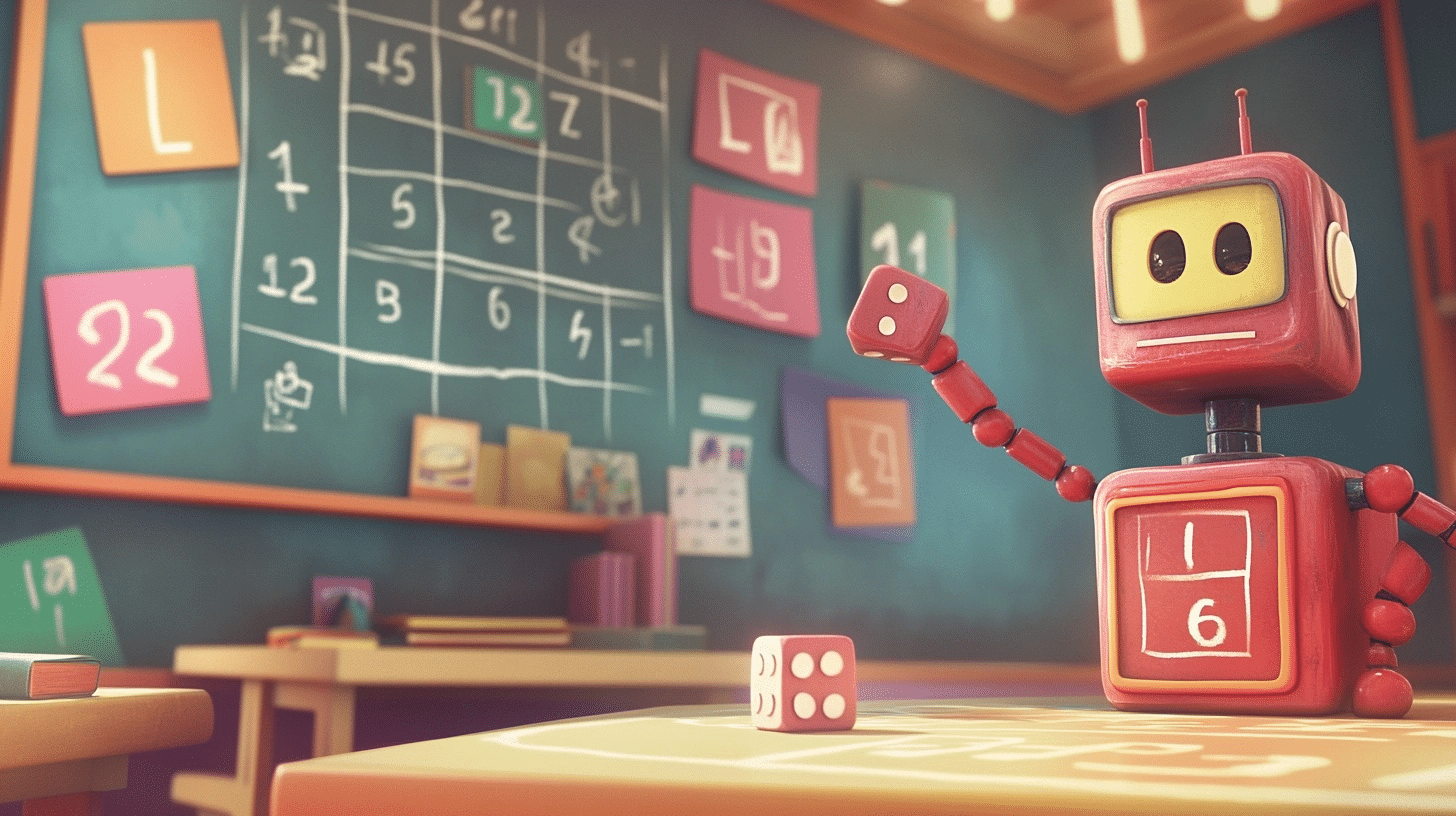
-
What is the smallest positive whole number?
The smallest positive whole number is 1. -
How many sides does a triangle have?
A triangle has 3 sides. -
What is 10 plus 5?
10 plus 5 equals 15. -
If you have 4 apples and you buy 3 more, how many apples do you have in total?
You have 7 apples in total. -
What is the next number in this sequence: 2, 4, 6, 8, __?
The next number is 10. -
How many minutes are in one hour?
There are 60 minutes in one hour. -
If you have a square with a side length of 3 units, what is the area?
The area is 9 square units (3 × 3 = 9). -
What is the sum of 3 and 7?
The sum of 3 and 7 is 10. -
What is the number of legs on 4 spiders?
4 spiders have 32 legs in total (8 legs each). -
How many days are in a week?
There are 7 days in a week. -
If you have a pack of 10 candies and eat 3, how many candies do you have left?
You have 7 candies left. -
What is the next number in this sequence: 5, 10, 15, 20, __?
The next number is 25. -
What is the total of 15 and 20?
The total is 35. -
If you have 3 bags of marbles and each bag has 4 marbles, how many marbles do you have in total?
You have 12 marbles in total (3 × 4 = 12). -
What is the value of 5 multiplied by 2?
The value is 10 (5 × 2 = 10). -
If you subtract 4 from 9, what do you get?
You get 5 (9 – 4 = 5). -
How many faces does a cube have?
A cube has 6 faces. -
What number comes after 99?
The number after 99 is 100. -
How many hours are there in a day?
There are 24 hours in a day. -
What is 8 plus 3?
8 plus 3 equals 11. -
What is the total of 6, 7, and 8?
The total is 21 (6 + 7 + 8 = 21). -
How many sides does a square have?
A square has 4 sides. -
What is the sum of 9 and 11?
The sum of 9 and 11 is 20. -
How many months are in a year?
There are 12 months in a year. -
What is 15 divided by 3?
15 divided by 3 equals 5. -
What is the value of 4 multiplied by 3?
The value is 12 (4 × 3 = 12). -
If you have 5 toy cars and you buy 2 more, how many toy cars do you have?
You have 7 toy cars in total. -
What is the area of a rectangle with length 6 units and width 3 units?
The area is 18 square units (6 × 3 = 18). -
How many legs does an octopus have?
An octopus has 8 legs. -
What is the next number in this sequence: 1, 4, 9, 16, __?
The next number is 25. -
What is the value of 7 plus 6?
The value is 13 (7 + 6 = 13). -
How many fingers does a human have in total?
A human has 10 fingers in total. -
What is the number of months in a leap year?
There are 12 months in a leap year. -
What is 3 times 5?
3 times 5 equals 15. -
How many edges does a cube have?
A cube has 12 edges. -
What is the difference between 10 and 4?
The difference is 6 (10 – 4 = 6). -
What number comes before 50?
The number before 50 is 49. -
How many seconds are in a minute?
There are 60 seconds in a minute. -
If you have 6 pencils and you give away 2, how many pencils do you have left?
You have 4 pencils left. -
What is the sum of 3 and 5?
The sum of 3 and 5 is 8. -
How many corners does a rectangle have?
A rectangle has 4 corners. -
What is 12 divided by 4?
12 divided by 4 equals 3. -
If you have 8 marbles and give away 5, how many do you have left?
You have 3 marbles left. -
What is the product of 2 and 6?
The product is 12 (2 × 6 = 12). -
How many minutes are in 3 hours?
There are 180 minutes in 3 hours (3 × 60 = 180). -
What is the sum of 25 and 15?
The sum of 25 and 15 is 40. -
How many vertices does a triangle have?
A triangle has 3 vertices. -
What is 9 plus 2?
9 plus 2 equals 11. -
How many edges does a pyramid have?
A pyramid has 8 edges (4 triangular edges and 4 base edges). -
How many weeks are in a year?
There are 52 weeks in a year. -
What is the area of a square with a side length of 5 units?
The area is 25 square units (5 × 5 = 25). -
What number is 1 less than 100?
99 is 1 less than 100. -
How many sides does a hexagon have?
A hexagon has 6 sides. -
What is the value of 2 plus 7?
The value is 9 (2 + 7 = 9). -
How many hours are in 2 days?
There are 48 hours in 2 days (2 × 24 = 48). -
What is the sum of 13 and 7?
The sum is 20 (13 + 7 = 20). -
How many degrees are in a right angle?
There are 90 degrees in a right angle. -
What is the product of 4 and 9?
The product is 36 (4 × 9 = 36). -
If you have 10 apples and give 2 to a friend, how many do you have left?
You have 8 apples left. -
How many faces does a pyramid have?
A pyramid has 5 faces (1 square base and 4 triangular sides).
Fun Math Trivia About Shapes and Geometry
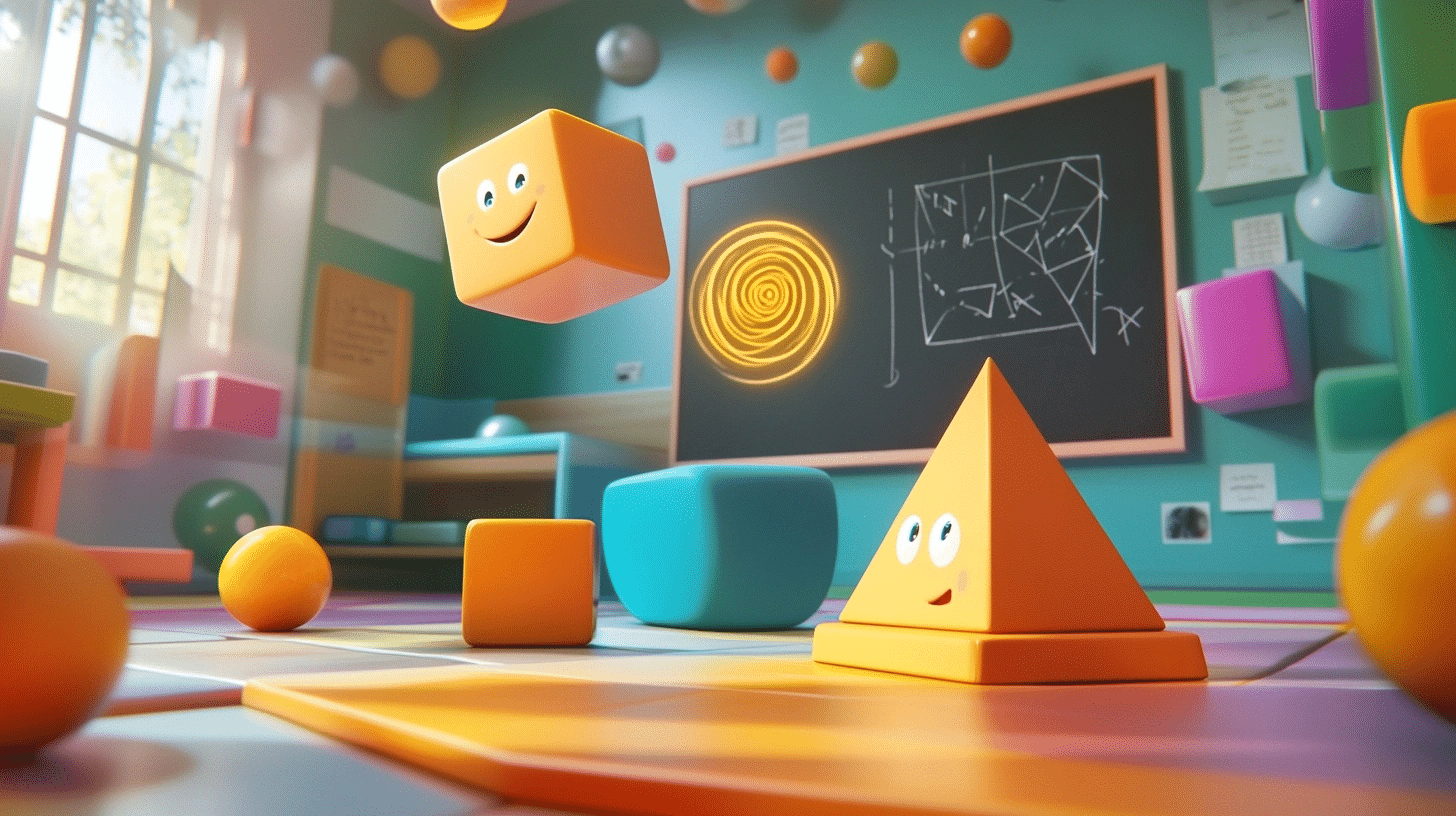
-
How many sides does a pentagon have?
A pentagon has 5 sides. -
What is the sum of the interior angles of a hexagon?
The sum is 720 degrees. -
How many faces does a cube have?
A cube has 6 faces. -
What is the shape of the base of a cone?
The base of a cone is a circle. -
How many edges does a tetrahedron have?
A tetrahedron has 6 edges. -
What shape is formed by rotating a rectangle around one of its sides?
A cylinder is formed. -
What is the formula for the area of a triangle?
The area is ½ × base × height. -
What is the sum of the interior angles of a quadrilateral?
The sum is 360 degrees. -
How many vertices does a hexagon have?
A hexagon has 6 vertices. -
What do you call a 3D object with a square base and four triangular sides?
It’s called a pyramid. -
What is the total number of sides in a decagon?
A decagon has 10 sides. -
What shape has only one curved surface and no edges?
A sphere. -
What is the name of the 2D shape with 4 equal sides and 4 right angles?
It’s a square. -
How many diagonals does a quadrilateral have?
A quadrilateral has 2 diagonals. -
What do you call a 3D object with two parallel circular bases?
A cylinder. -
What is the name of a triangle with all sides of equal length?
An equilateral triangle. -
What is the area formula for a rectangle?
The area is length × width. -
How many faces does a rectangular prism have?
A rectangular prism has 6 faces. -
What is the sum of the exterior angles of any polygon?
The sum is always 360 degrees. -
How many sides does a nonagon have?
A nonagon has 9 sides. -
What is the name of a 3D object with a circular base and a pointed top?
It’s called a cone. -
How many faces does a dodecahedron have?
A dodecahedron has 12 faces. -
What do you call a polygon with 7 sides?
A heptagon. -
What is the formula for the circumference of a circle?
The circumference is 2πr. -
How many faces does a tetrahedron have?
A tetrahedron has 4 faces. -
What is the sum of the interior angles of a heptagon?
The sum is 900 degrees. -
What do you call a 2D shape with 3 sides?
It’s a triangle. -
How many vertices does a cube have?
A cube has 8 vertices. -
What is the name of a triangle with two equal sides?
An isosceles triangle. -
How many sides does an octagon have?
An octagon has 8 sides. -
What is the area formula for a circle?
The area is πr². -
What do you call a 3D object with all edges equal and all angles 90 degrees?
It’s a cube. -
How many sides does a quadrilateral have?
A quadrilateral has 4 sides. -
What is the sum of the interior angles of a triangle?
The sum is 180 degrees. -
What do you call a polygon with 10 sides?
A decagon. -
How many faces does an icosahedron have?
An icosahedron has 20 faces. -
What is the formula for the area of a parallelogram?
The area is base × height. -
How many edges does a cube have?
A cube has 12 edges. -
What do you call a polygon with 6 sides?
A hexagon. -
How many faces does a cone have?
A cone has 2 faces: one circular base and one curved surface. -
What is the sum of the interior angles of a pentagon?
The sum is 540 degrees. -
What do you call a triangle with one right angle?
A right triangle. -
How many sides does a quadrilateral have?
A quadrilateral has 4 sides. -
What is the name of the 3D shape with 2 circular bases and a curved surface connecting them?
A cylinder. -
How many sides does a heptagon have?
A heptagon has 7 sides. -
What do you call a 3D shape with two parallel faces that are polygons?
A prism. -
What is the formula for the surface area of a sphere?
The surface area is 4πr². -
How many faces does a triangular prism have?
A triangular prism has 5 faces. -
What is the name of a shape with four right angles and opposite sides equal?
A rectangle. -
What do you call a 3D object with 5 faces, 9 edges, and 6 vertices?
A square pyramid. -
How many diagonals does a hexagon have?
A hexagon has 9 diagonals. -
What is the sum of the interior angles of an octagon?
The sum is 1080 degrees. -
How many sides does a square have?
A square has 4 sides. -
What do you call a polygon with 12 sides?
A dodecagon. -
What is the name of a polygon with 4 sides of equal length and no right angles?
A rhombus. -
How many edges does a square pyramid have?
A square pyramid has 8 edges. -
What do you call the center of a circle?
The center is the point equidistant from all points on the circle. -
What is the name of a triangle with three different side lengths?
A scalene triangle. -
How many faces does a hexagonal prism have?
A hexagonal prism has 8 faces. -
What is the perimeter formula for a rectangle?
The perimeter is 2 × (length + width). -
How many vertices does a dodecahedron have?
A dodecahedron has 20 vertices. -
What is the name of the shape formed by rotating a triangle around one of its sides?
A cone. -
How many sides does a hexagon have?
A hexagon has 6 sides. -
What do you call a 3D object with a hexagonal base and six rectangular faces?
A hexagonal prism. -
How many diagonals does a decagon have?
A decagon has 35 diagonals. -
What is the name of the shape with 4 equal sides but no right angles?
A rhombus. -
How many faces does an octahedron have?
An octahedron has 8 faces. -
What is the sum of the interior angles of a quadrilateral?
The sum is 360 degrees. -
What do you call a 3D shape with 6 rectangular faces?
A rectangular prism. -
What is the name of a triangle with one angle greater than 90 degrees?
An obtuse triangle. -
How many edges does a pentagonal prism have?
A pentagonal prism has 15 edges. -
What is the formula for the volume of a sphere?
The volume is (4/3)πr³. -
How many sides does an icosagon have?
An icosagon has 20 sides. -
What do you call a polygon with 11 sides?
An hendecagon. -
What is the name of a shape with 6 faces, all squares?
A cube. -
How many vertices does a square pyramid have?
A square pyramid has 5 vertices. -
What is the sum of the interior angles of a heptagon?
The sum is 900 degrees. -
How many diagonals does a quadrilateral have?
A quadrilateral has 2 diagonals. -
What do you call a circle’s boundary?
The boundary is called the circumference. -
What is the name of a polygon with 4 sides of equal length but no right angles?
A rhombus. -
How many faces does a cube have?
A cube has 6 faces. -
What is the area formula for a parallelogram?
The area is base × height. -
How many faces does a regular octahedron have?
A regular octahedron has 8 faces. -
What is the sum of the interior angles of a dodecagon?
The sum is 1800 degrees. -
How many sides does a icosahedron have?
An icosahedron has 20 faces. -
What is the perimeter of a square with side length 6 units?
The perimeter is 24 units (4 × 6 = 24). -
How many sides does an enneagon have?
An enneagon has 9 sides. -
What is the formula for the volume of a cylinder?
The volume is πr²h. -
How many edges does a cube have?
A cube has 12 edges. -
What do you call a 2D shape with 5 sides?
A pentagon. -
How many sides does a quadrilateral have?
A quadrilateral has 4 sides. -
What shape has 2 faces that are congruent circles and a curved surface connecting them?
A cylinder. -
What is the name of a 3D shape with all of its faces as rectangles?
A rectangular prism. -
How many sides does a heptadecagon have?
A heptadecagon has 17 sides. -
What is the name of the longest diagonal in a rectangular prism?
The space diagonal. -
What is the sum of the interior angles of a polygon with 6 sides?
The sum is 720 degrees. -
What is the volume formula for a rectangular prism?
The volume is length × width × height. -
How many vertices does a pyramid with a square base have?
A square pyramid has 5 vertices. -
How many sides does a star-shaped pentagram have?
A pentagram has 10 sides. -
How many faces does a tetrahedron have?
A tetrahedron has 4 faces. -
How many sides does a dodecagon have?
A dodecagon has 12 sides. -
What is the area of a circle with a radius of 5 units?
The area is 25π square units (πr²). -
How many faces does a triangular prism have?
A triangular prism has 5 faces. -
What do you call a quadrilateral with two pairs of opposite sides parallel?
A parallelogram. -
How many faces does a rectangular pyramid have?
A rectangular pyramid has 5 faces. -
What do you call a 2D shape with 6 sides and equal length sides?
A regular hexagon. -
How many faces does a regular tetrahedron have?
A regular tetrahedron has 4 faces. -
What is the area of a triangle with a base of 4 units and height of 3 units?
The area is 6 square units (½ × 4 × 3). -
How many vertices does a square have?
A square has 4 vertices. -
What do you call a polygon with 20 sides?
An icosagon. -
How many diagonals does a hexagon have?
A hexagon has 9 diagonals.
How to Create Your Own Math Trivia Quiz

Creating a math trivia quiz is a fun way to challenge friends, students, or even yourself! Here’s how to make it engaging and enjoyable.
First, pick a theme. Do you want general math trivia, historical facts, brain teasers, or number patterns? Choosing a focus makes your quiz more exciting.
Next, create a mix of questions. Use a variety of multiple-choice, true/false, and open-ended questions to keep players thinking.
For example, “What is the only even prime number?” or “Who is known as the father of geometry?”
Keep the difficulty balanced. Include easy, medium, and tricky questions so everyone can participate. A great quiz makes players think but doesn’t frustrate them!
Don’t forget to add fun explanations. After each question, provide a quick fact or story behind the answer. This makes learning memorable!
How Does Math Trivia Enhance Critical Thinking Skills?
- Math trivia isn’t just fun—it’s a brain workout! Solving tricky number facts, puzzles, and historical math oddities helps sharpen your critical thinking skills in ways you might not expect.
- First, math trivia encourages problem-solving. When you come across an unusual math fact or puzzle, your brain automatically starts connecting ideas, spotting patterns, and thinking logically.
- This strengthens your ability to break down complex problems into simple steps.
- It also boosts analytical skills. Many math trivia questions require you to think beyond the obvious and apply logic.
- For example, did you know there’s only one even prime number? If you guessed 2, congrats—you just analyzed a mathematical rule without even realizing it!
- Math trivia also improves memory and recall. The more you interest with numbers, the better your brain gets at recognizing sequences and relationships, which helps in real-world decision-making.
- Plus, it makes learning math less intimidating and more enjoyable. Instead of seeing numbers as a challenge, trivia makes them feel like a game, keeping your brain interested.
Final Thoughts
Now you have 321 math puzzles to challenge your thinking. These riddles go beyond simple calculations, pushing your brain to work in new ways.
Why does this matter? Because math puzzles build problem-solving skills that help in everyday situations. When you solve these riddles, you’re training your mind to approach challenges from different angles.
What makes these math trivia questions special is how they balance fun with mental exercise. They’re designed to entertain while they educate.
For those who enjoyed these number challenges, our other trivia collections might interest you too.
From movie trivia that tests your film knowledge to barbie trivia for pop culture fans, there’s always another way to keep your mind sharp.
Mathematical thinking is a skill worth developing—and these 321 riddles make that process enjoyable.


